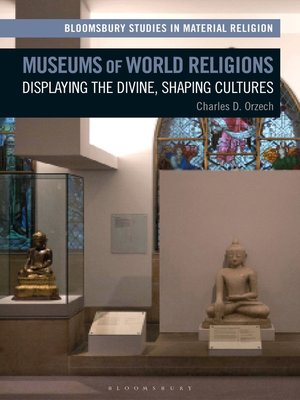Museums of World Religions
ebook ∣ Displaying the Divine, Shaping Cultures · Bloomsbury Studies in Material Religion
By Charles Orzech

Sign up to save your library
With an OverDrive account, you can save your favorite libraries for at-a-glance information about availability. Find out more about OverDrive accounts.
Find this title in Libby, the library reading app by OverDrive.



Search for a digital library with this title
Title found at these libraries:
| Library Name | Distance |
|---|---|
| Loading... |
Critically examining the notion of 'world religions', Charles D. Orzech compares five purpose-built museums of world religions and their online extensions. Inspired by the 19th and 20th century discipline of comparative religion, these museums seek to promote religious tolerance by representing religious diversity and by arguing for underlying kinship among religions.
From locations in Europe (Marburg, Glasgow and St Petersburg), to North America (Quebec) to Asia (Taipei), each museum advances a particular cultural history. This book shows how the curation of the objects they contain shapes public perceptions of religion, giving material form to the discourses about religion and world religions.
Raising important questions about religion and secularity, museum displays and religious piety, Museums of World Religions questions the ideology that informs these museums. Building on recent anthropological work on the agency of religious objects, the author critiques these museums and suggests new approaches to displaying the matter of religion.
From locations in Europe (Marburg, Glasgow and St Petersburg), to North America (Quebec) to Asia (Taipei), each museum advances a particular cultural history. This book shows how the curation of the objects they contain shapes public perceptions of religion, giving material form to the discourses about religion and world religions.
Raising important questions about religion and secularity, museum displays and religious piety, Museums of World Religions questions the ideology that informs these museums. Building on recent anthropological work on the agency of religious objects, the author critiques these museums and suggests new approaches to displaying the matter of religion.







